PPA: almost complete autonomy. We build autonomous power supply for a small village
So, in the posts earlier we talked about the energy supply of individual objects and private consumers. Over the past two years, it has been possible to build more than twenty hi-end level stations, which means using expensive and high-quality components and satisfying almost all requests for house power supply, with the exception of heating (it will not take long to heat up with solar energy). And this trend is growing, as prices in the market become lower, and the average income of the population is higher.
It is clear that not from the life of a good people put solar power plants, but when the supplying electric grid organization rolls out a price tag around 1.5 million rubles per kilometer of power lines, plus a lot of money for the project, the choice becomes obvious. But this is not what we are talking about today. Today we will talk about the experience of the power supply of a small village that does not have access roads other than a winter road, and in summer you can swim to it along the river by boat, or on a horse, climbing into the mountains and crossing the river during the shallows.
This village is called Suranash, located in the Altai Republic, in the Turochaksky district. The population is 40-50 people, 10-12 yards. The main activity is animal husbandry, fishing, hunting and gathering. In short, the usual types of employment for the village. Power supply is provided by two diesel generators, the main and backup, with a total power of 34 kW. Since everyone has heating in the village, the main consumers are televisions, kettles, irons, washing machines, and so on.
Since we are a supplying organization, our task is to ensure uninterrupted power supply to the communities under our control.
We deliver fuel to Suranash in winter, before the winter road subsides, and there is no access to fuel tanks until next winter. To eliminate possible interruptions, as well as save money on the purchase of constantly rising fuel, it was decided to install a hybrid autonomous solar power plant, as part of an energy service contract. (Caution TRAFFIC: many photos) Next, read all about it under the cut:
')
The project was fully developed by the specialists of Energy Service Company LLC, starting from the drawings, the selection of components, and ending with installation and commissioning.
I can’t see the sense in steps, in general, the procedure looked like this: design, preparation of constructive parts, purchase of components, delivery to the site, installation work, and commissioning.
At the design stage, the main parameters of the station, location, construction, calculation of the capacity of batteries, inverters, and other equipment were determined.
Further, preparation began in the workshop walls - drilling, welding, fastener packaging, packing of components into boxes. Several photos of the process:
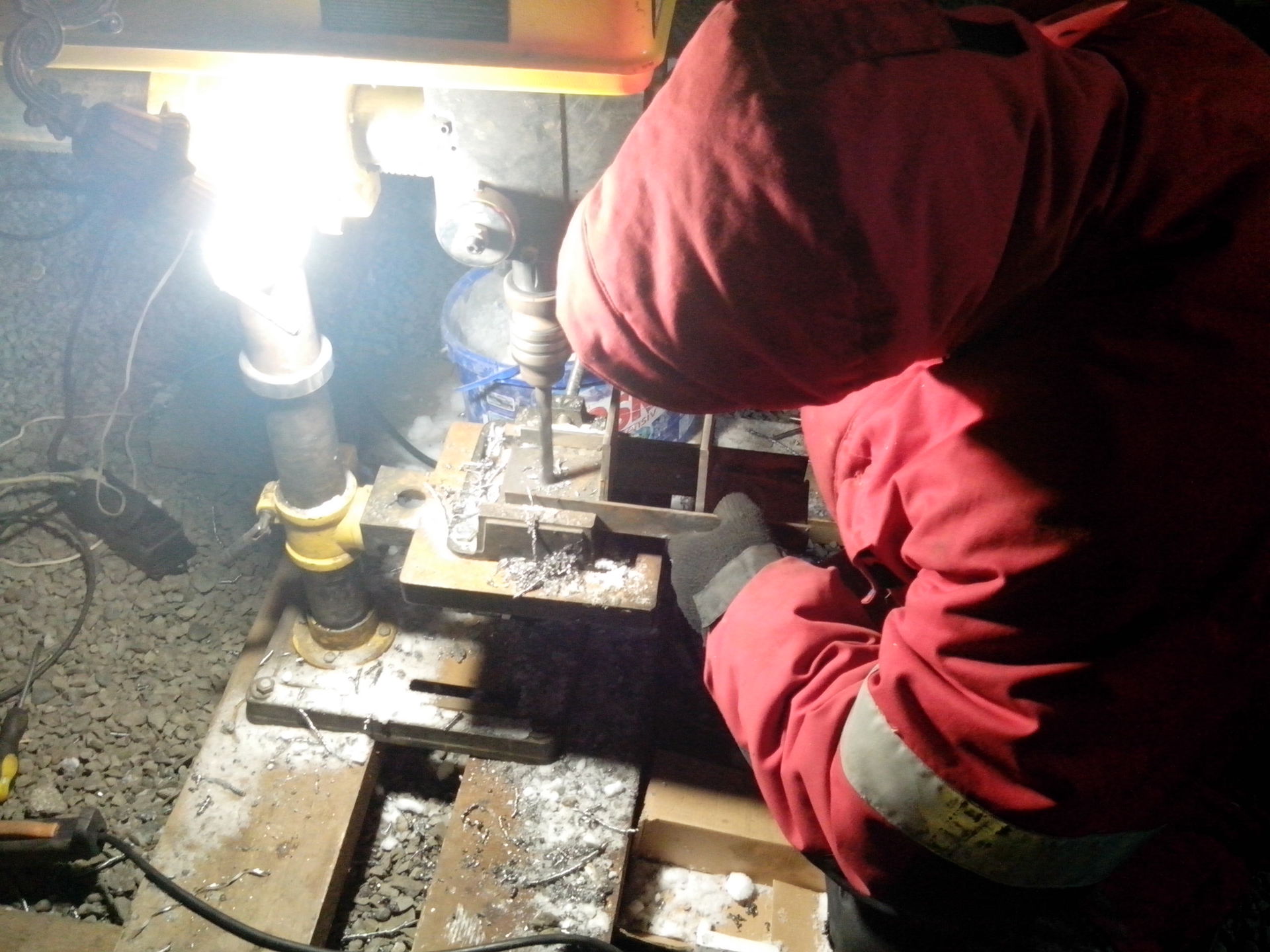

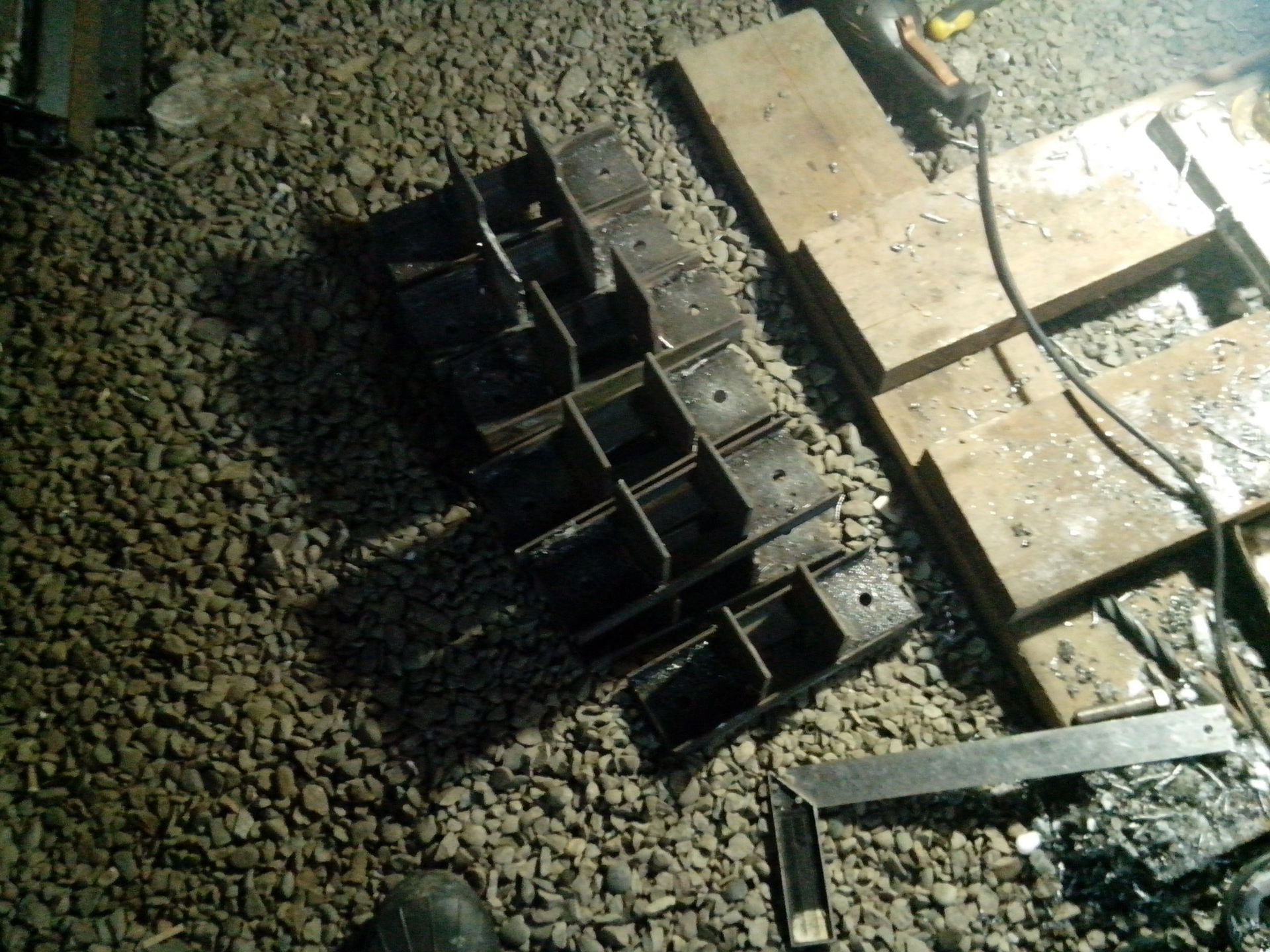
After preparing all the components - loading and delivery to the place of construction, through winter roads, very treacherous roads.


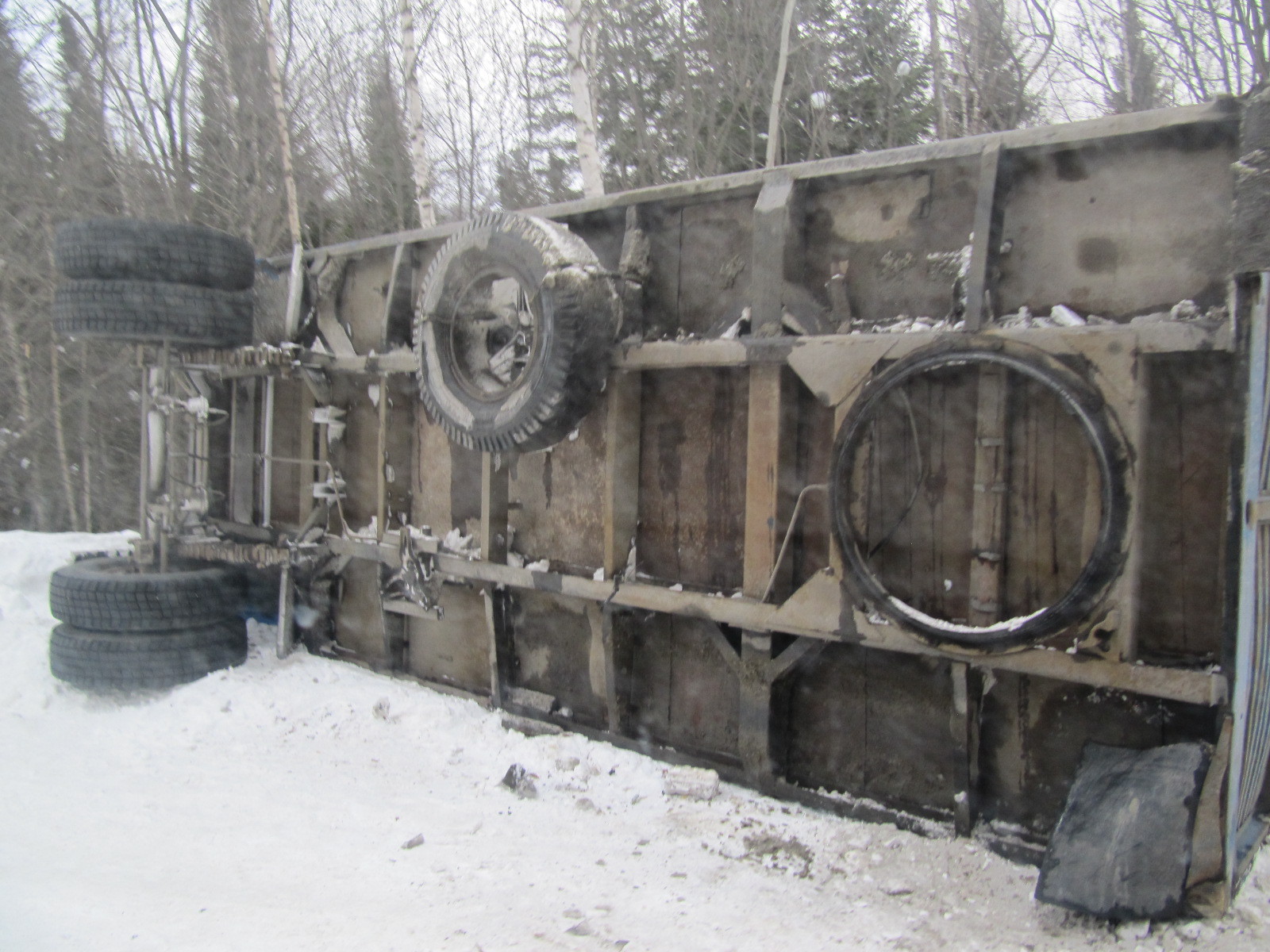

Station installation location:
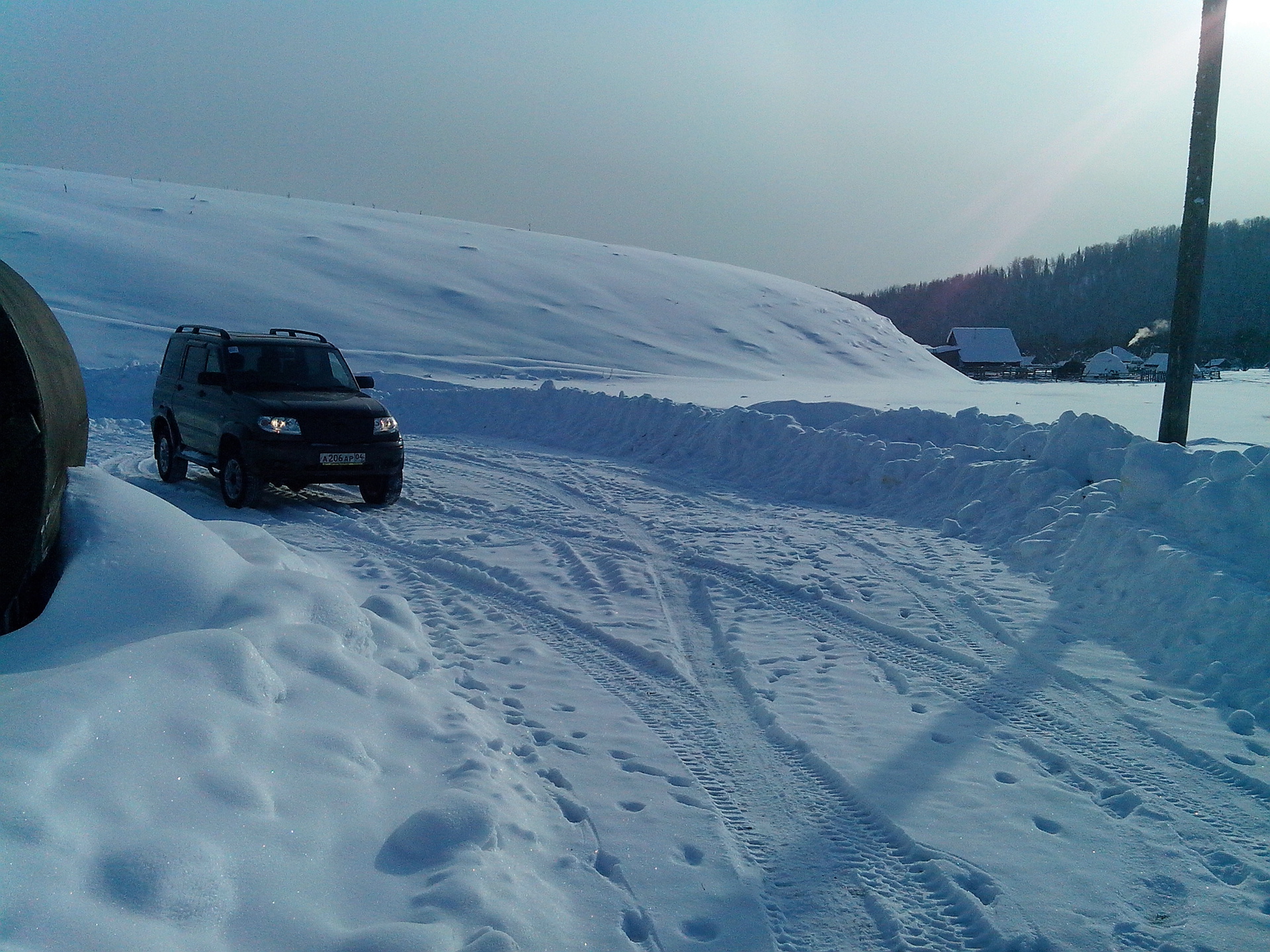

After justification at the base, preparations for the installation began - the markings were made and the holes for the posts began to be drilled.
The soil is not the most pleasant, clayey, viscous.
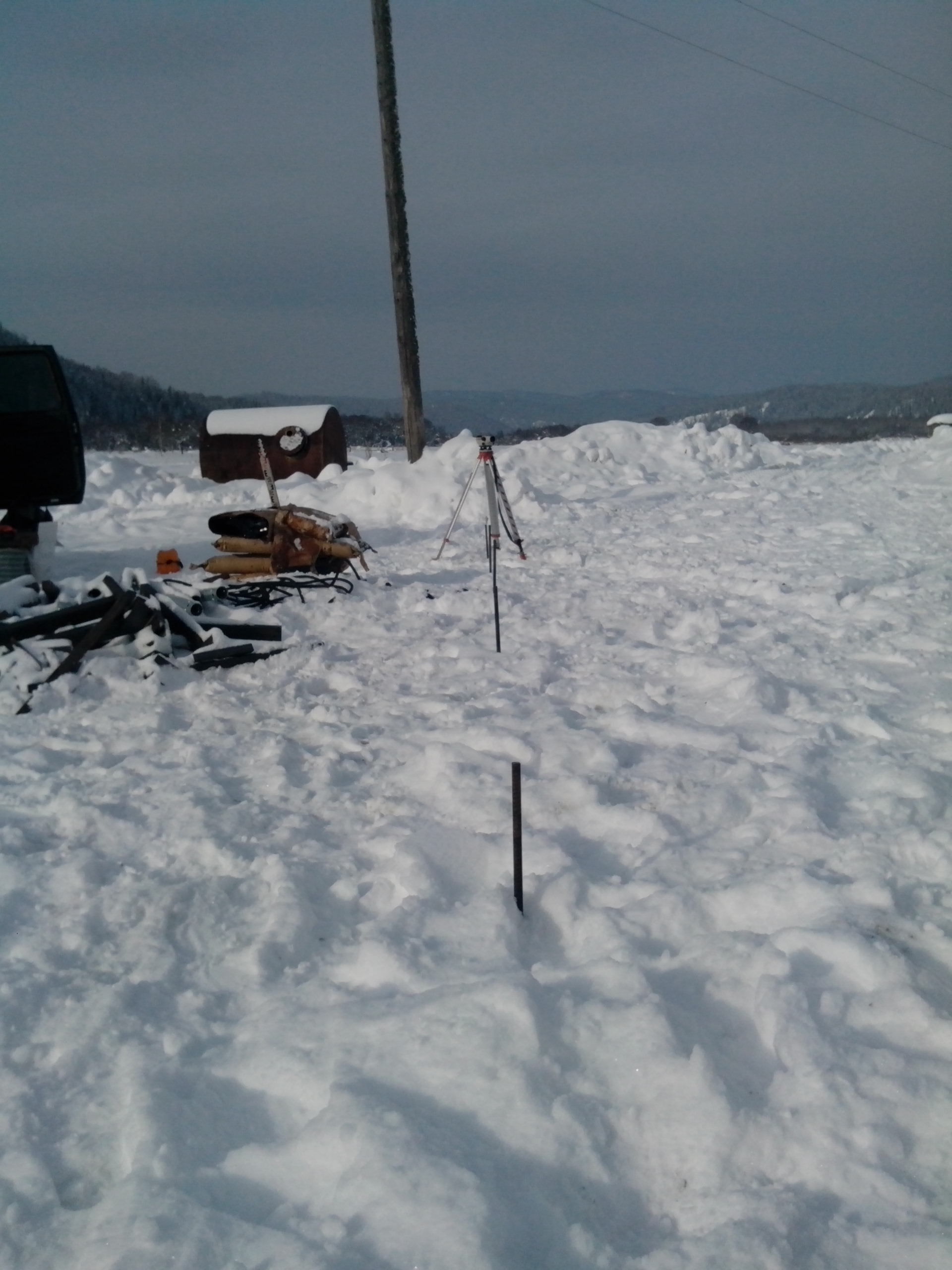
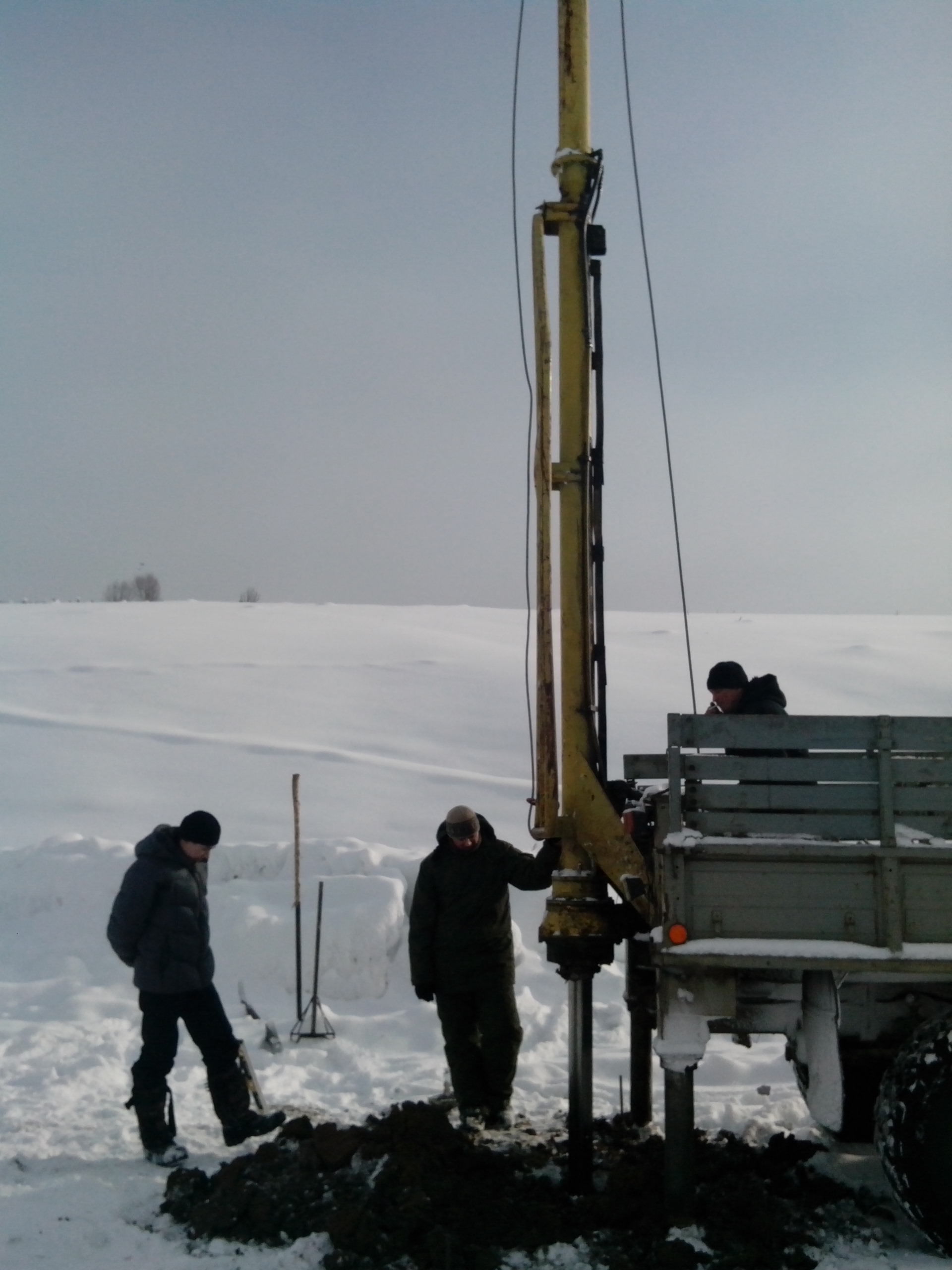

Next, install concrete pillars
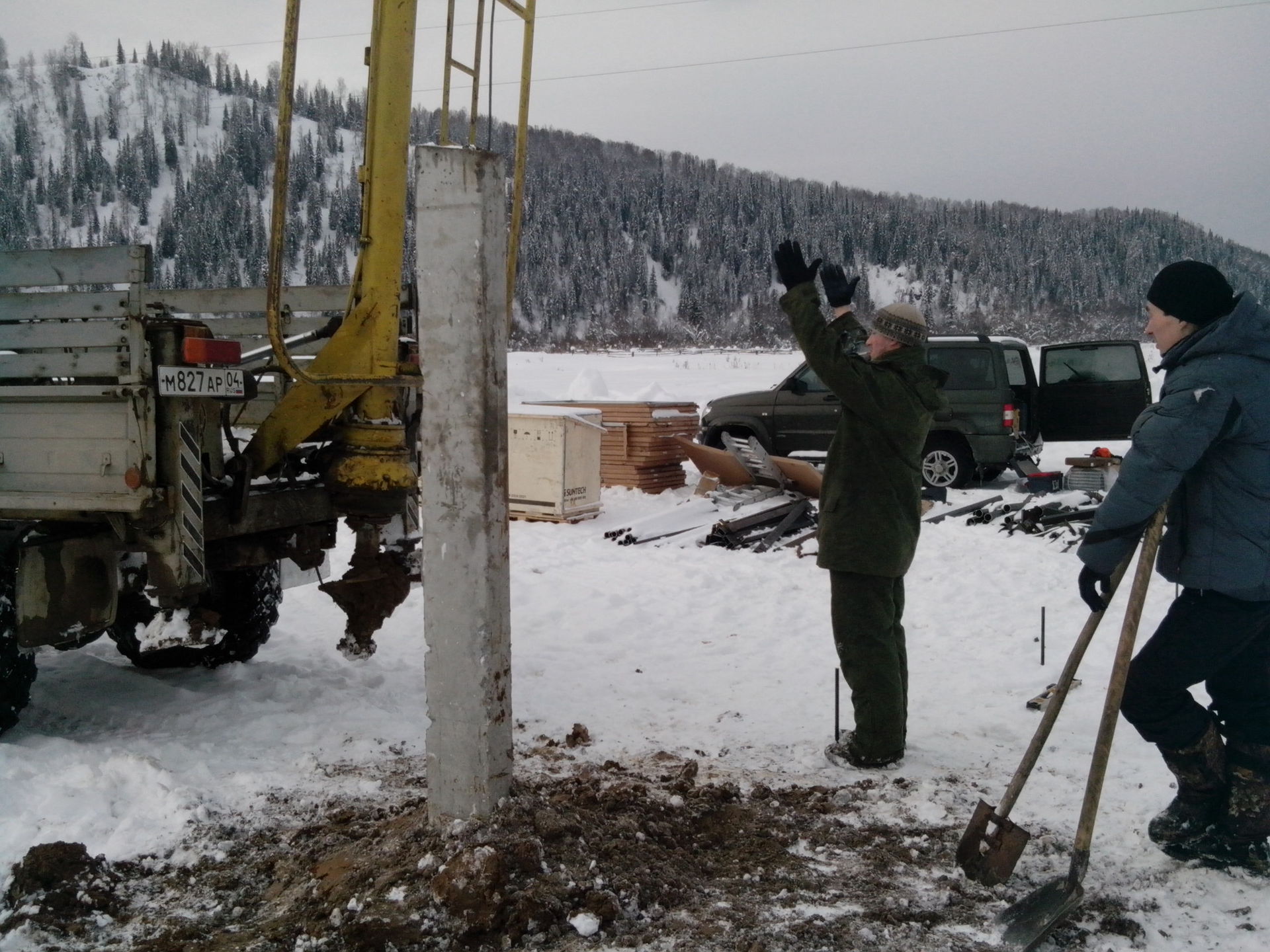
And they started installing fasteners for solar panels


Fasteners installed, installation of solar panels begins:
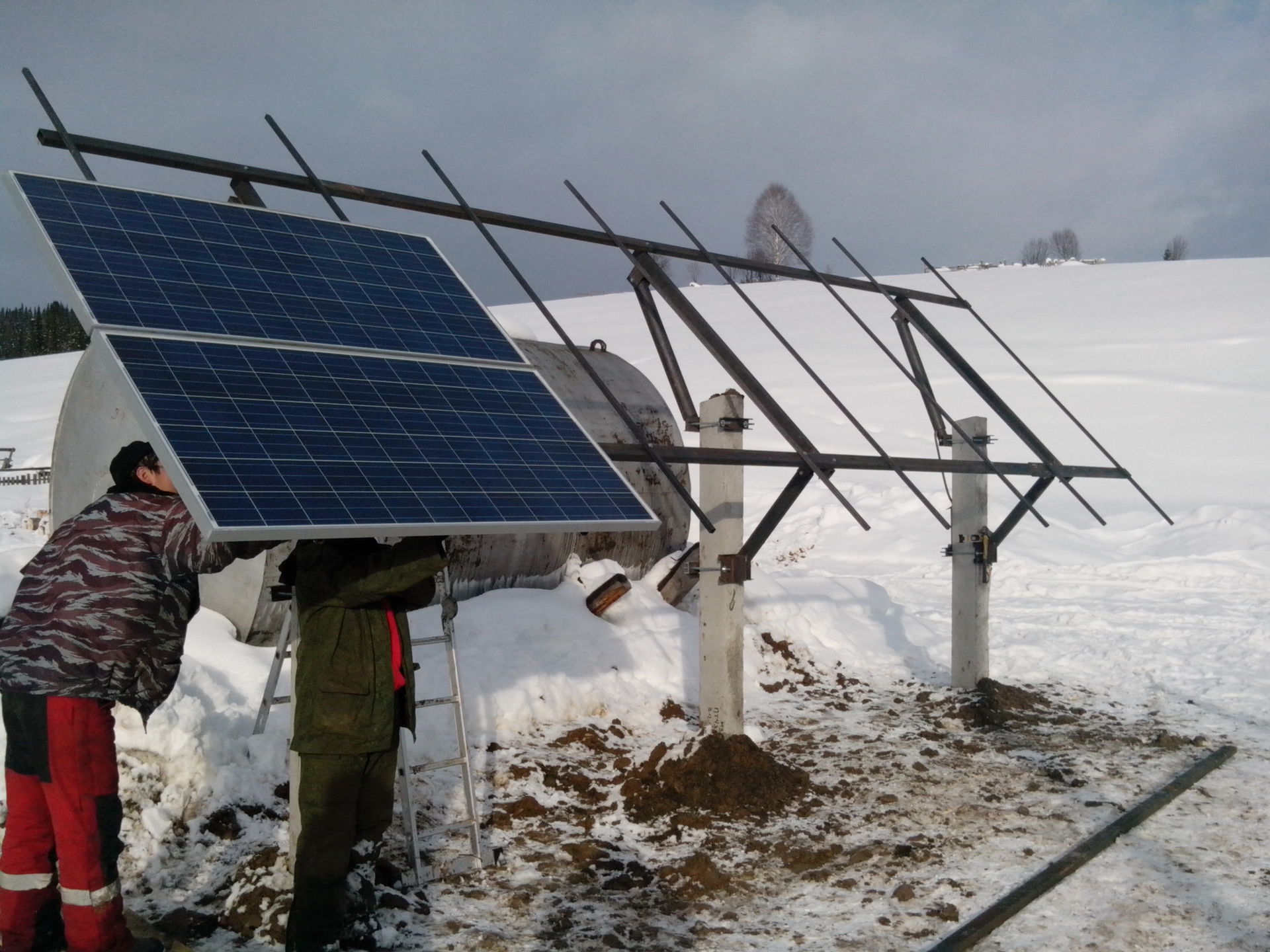

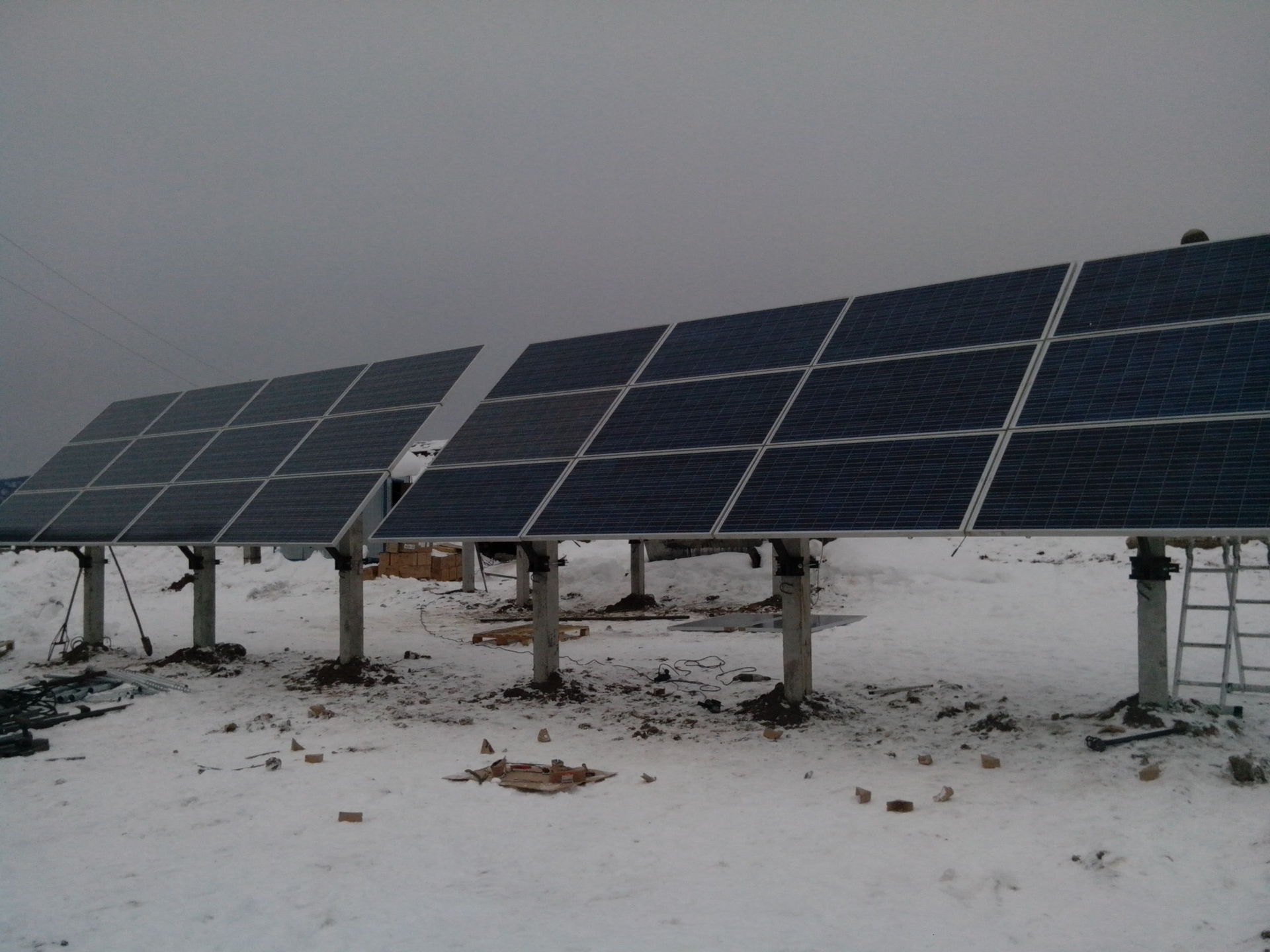

Ruslan plays the role of Angry Bird. In fact, with these ropes we adjusted the angle of the batteries in relation to the sun.
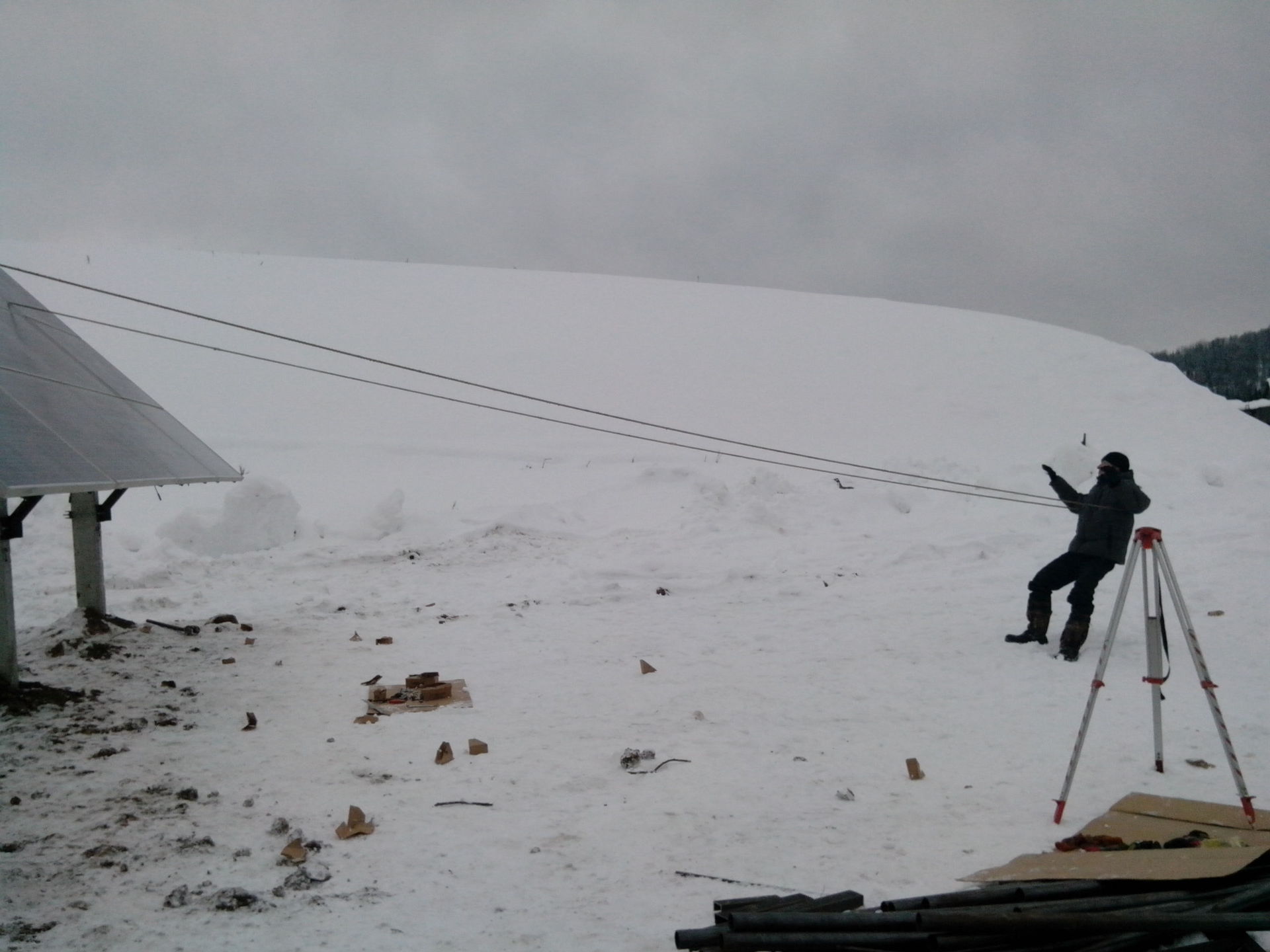
View from afar:

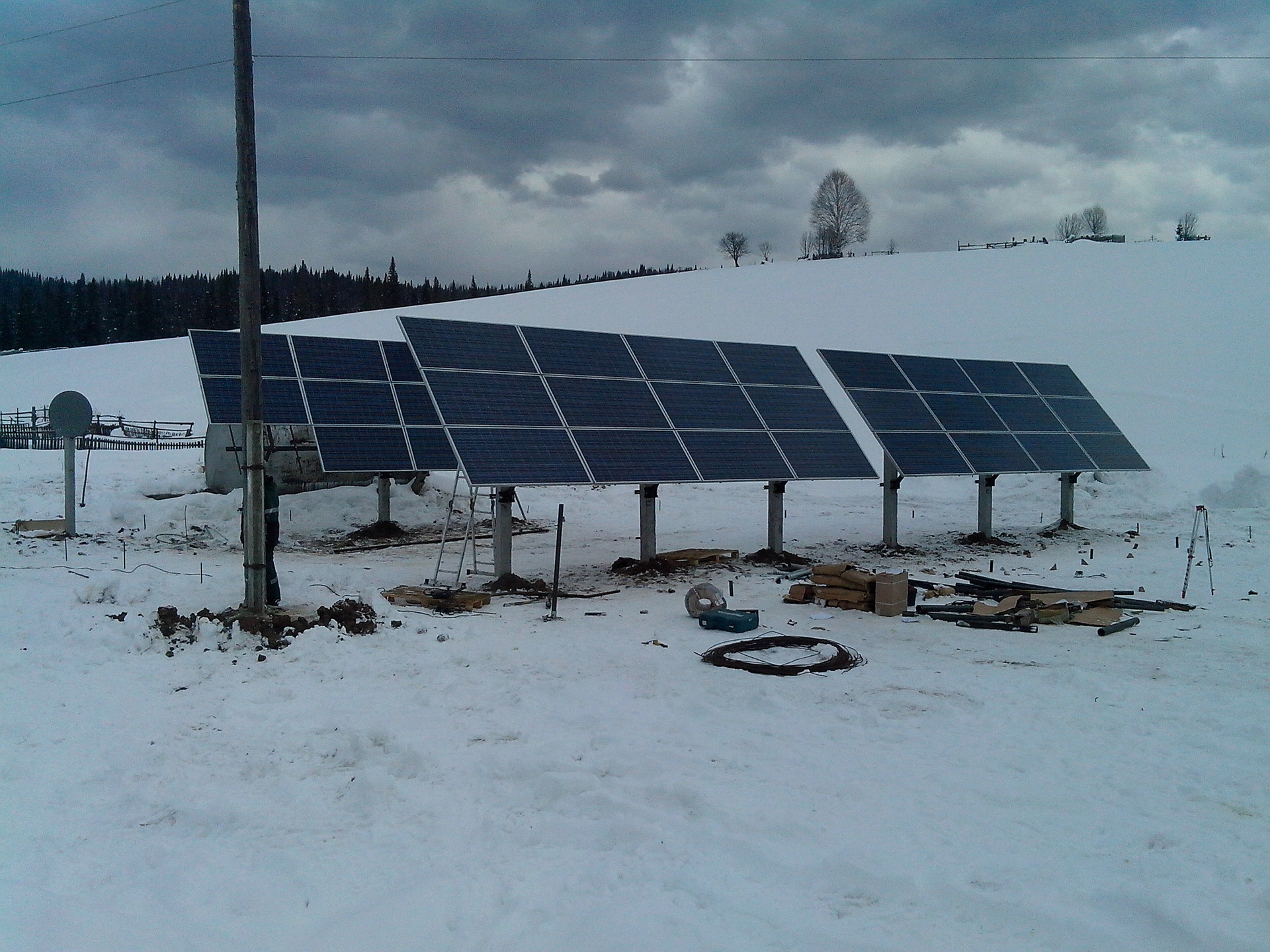
The production of solar panels - 10 kW * hour at the peak, on average from 5 and up, depending on the weather.
Then the work was divided into two parts: the first team took up the installation of charge controllers and autonomous inverters in the container, disconnection of cables, and other engineering work, the second team took up the fencing of the territory. The third team in the person of me and the director of the company came only to install satellite Internet and to establish the IT part of the work.

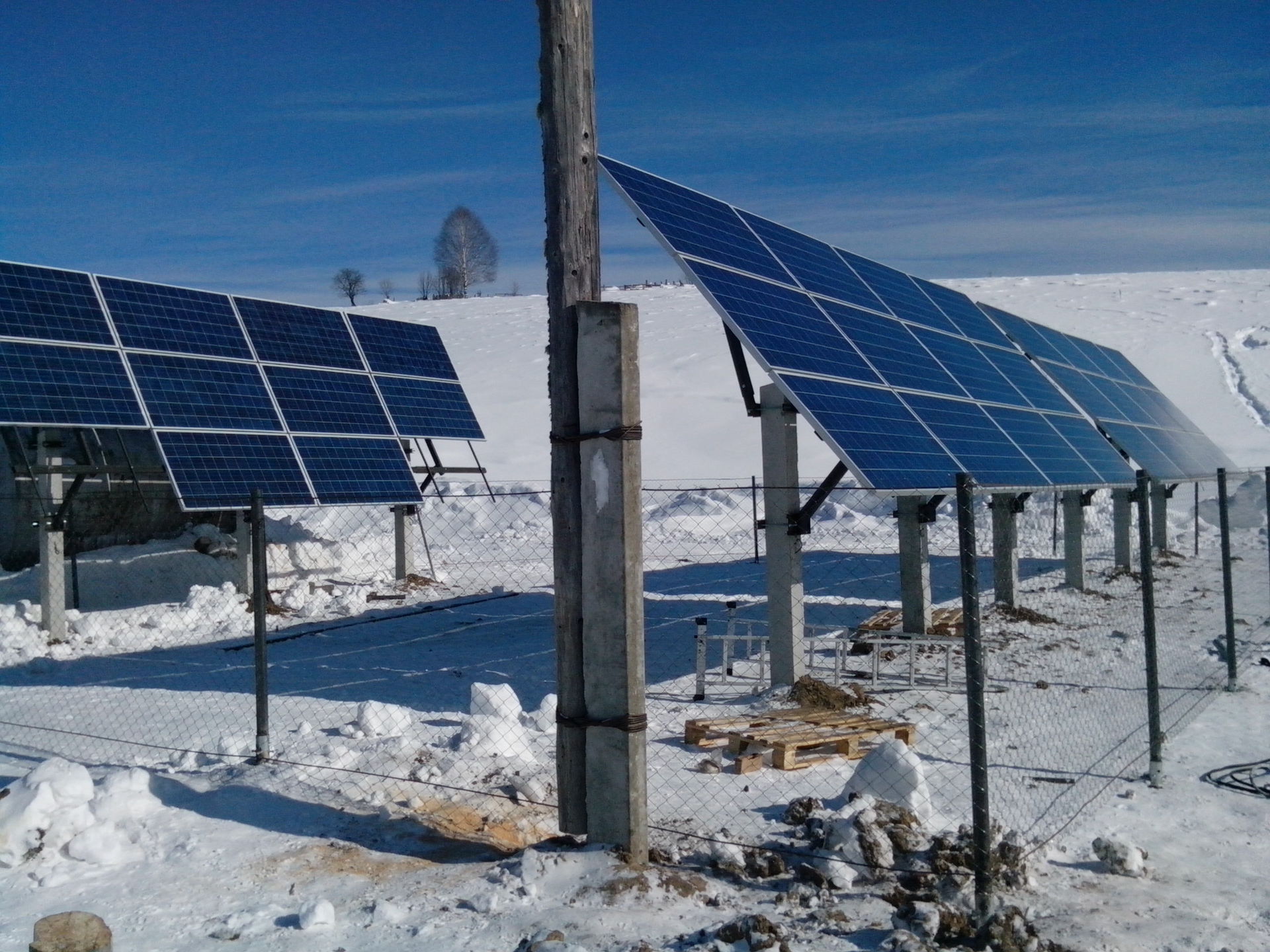
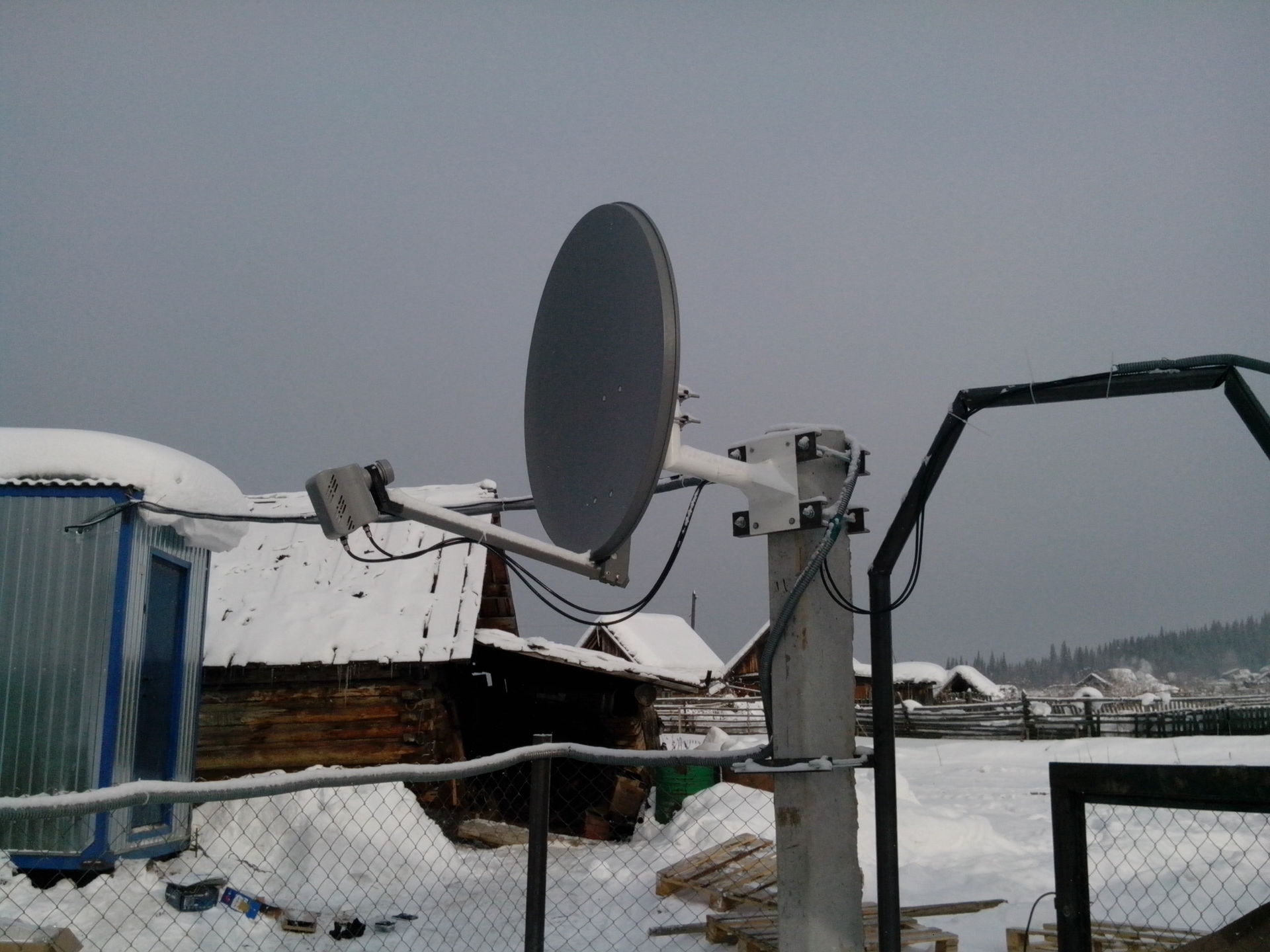
It was decided to buy the Internet in Rusat, which offers relatively affordable VSAT-Internet under the brand KiteNet.
Installation and configuration went without any problems, except that the platform itself was still working in test mode, and later, with the transition to normal mode, I had to go to Suronash again to restart the terminal and set up sending reports to the Conext ComBox.
Charge controllers and autonomous inverters are located in the container, the choice fell in favor of Schneider electric.
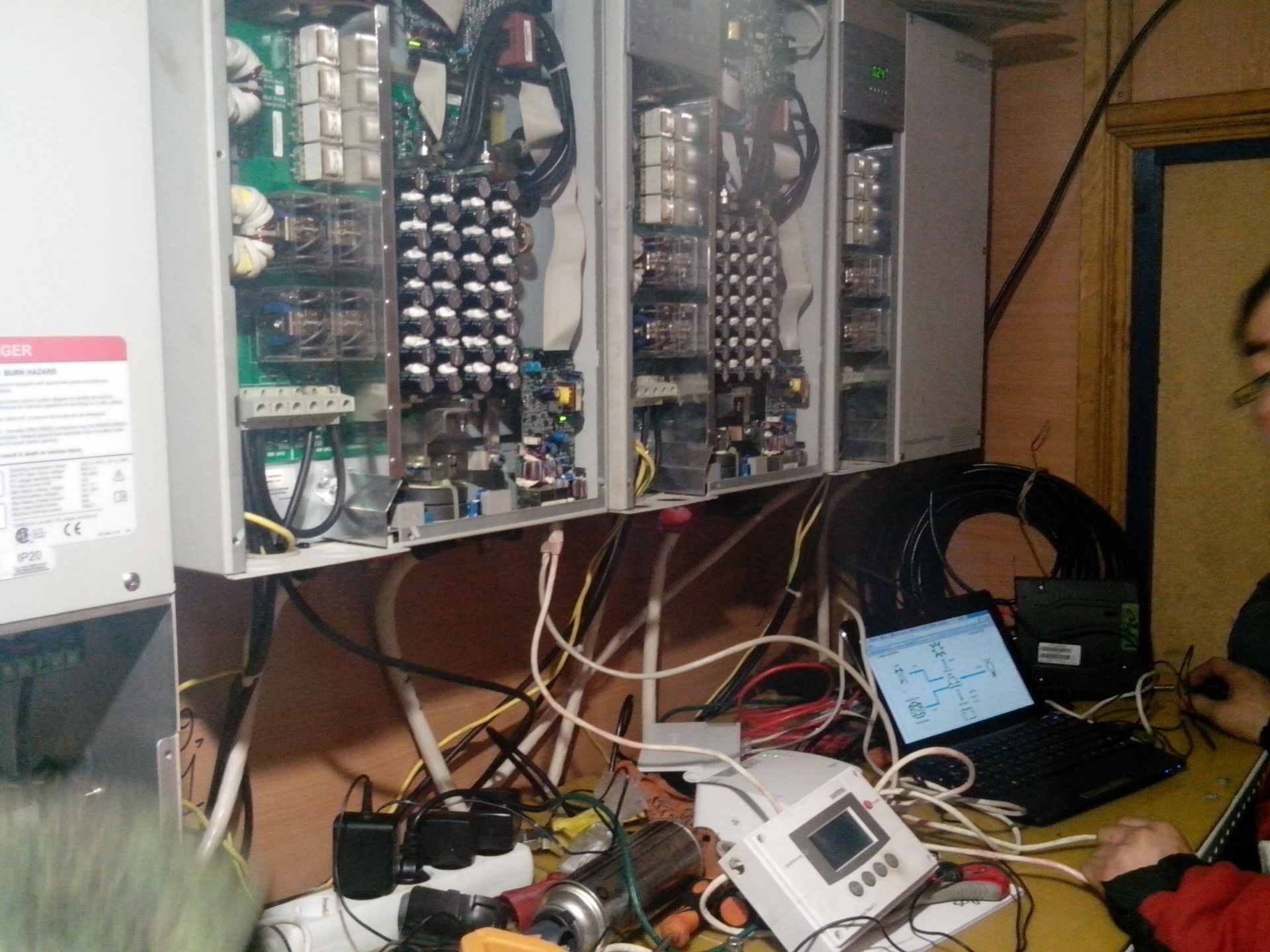
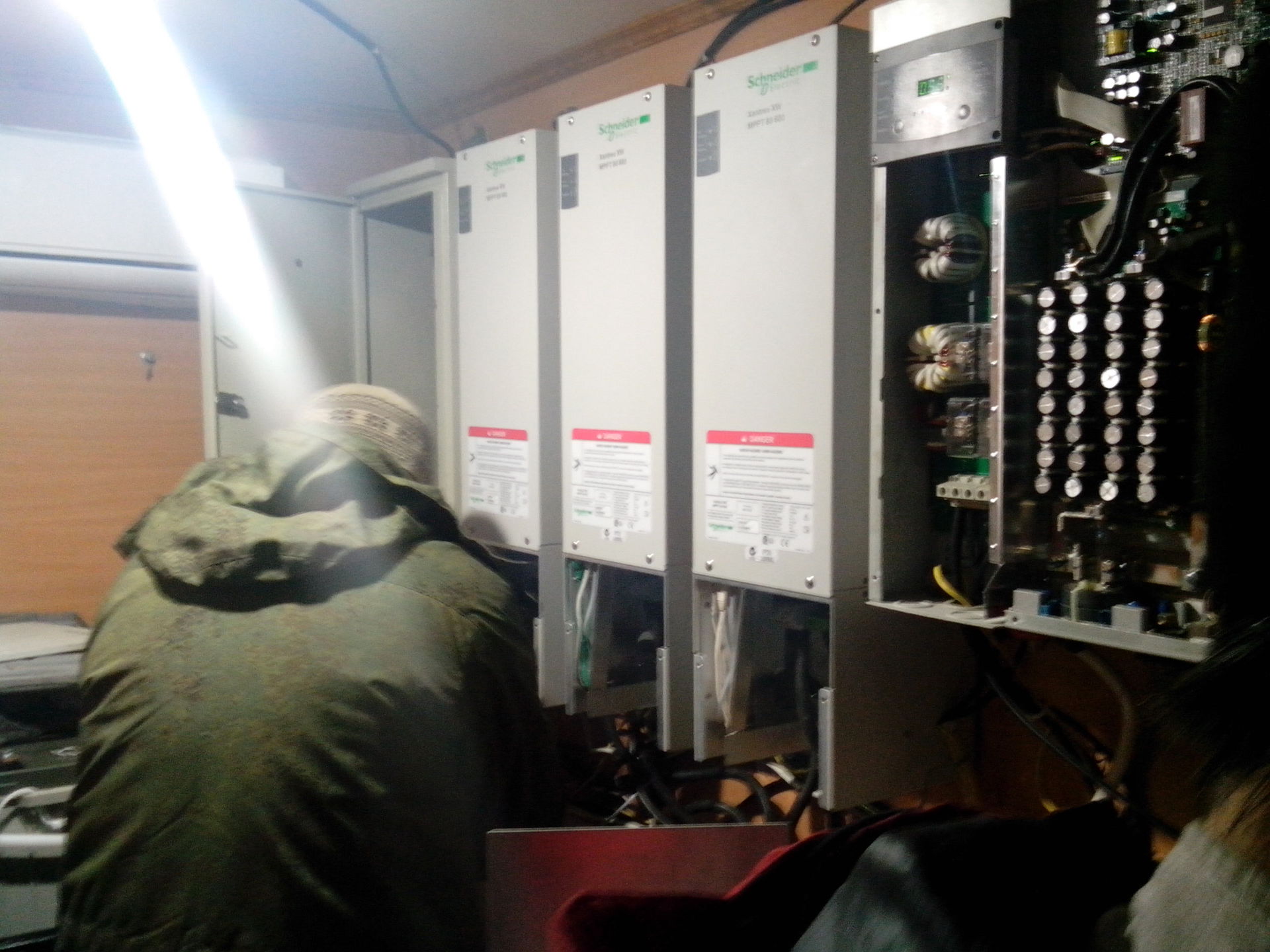

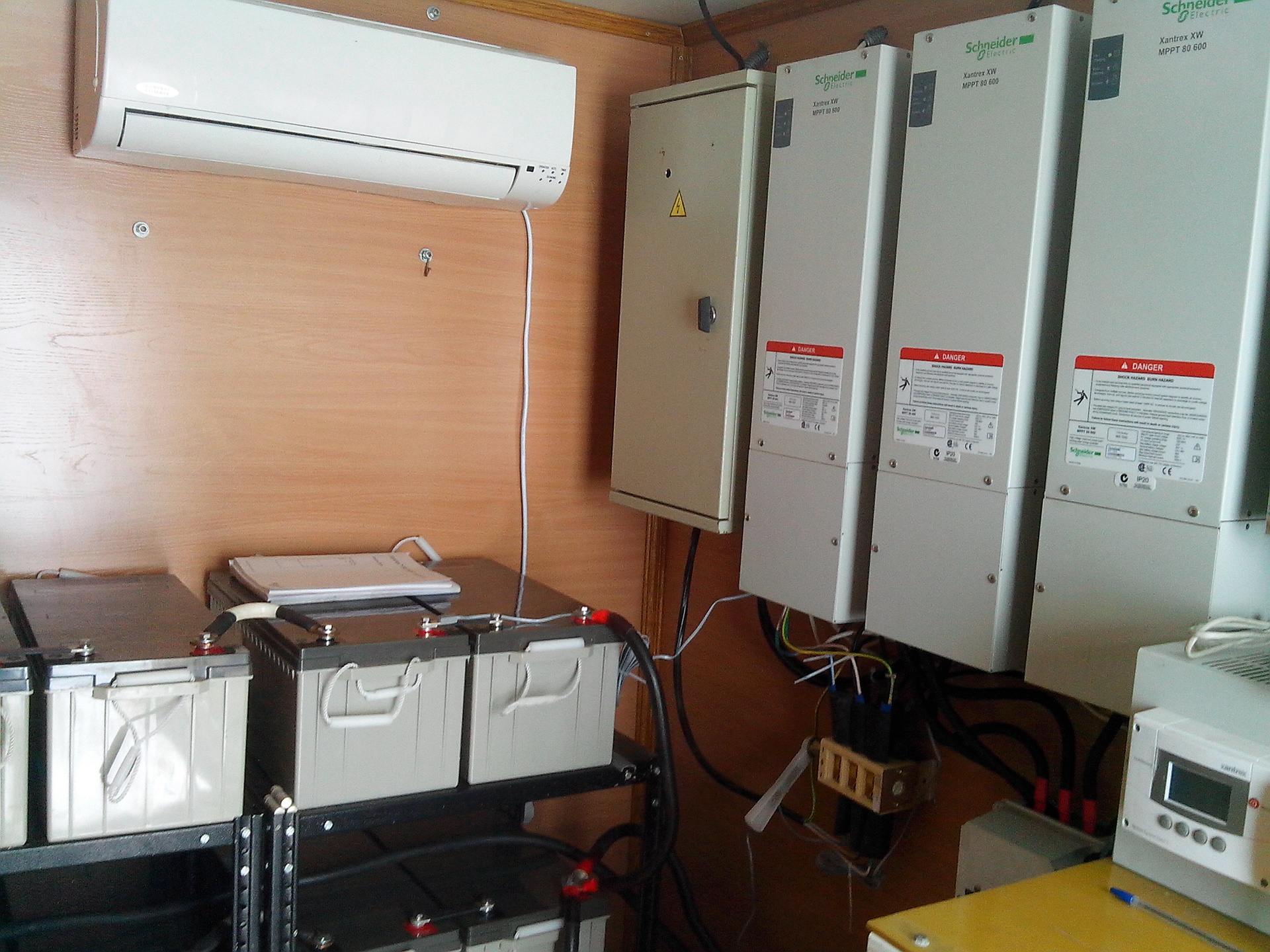
After setting up and launching the station, it remained to configure the auto-start of the diesel generator.
Applying engineering ingenuity, set it all up with the help of some mother and a normally closed relay from the Zhiguli and the generator automatic start block.

Generator startup module - right black box with a train

At this almost all the work was completed, and it was time to get home. Time to install the station took 10 days.
The station operates in normal mode, the diesel generator practically does not start. Since the launch of the station (March 1), the diesel generator has been operating for approximately 15 hours. Electricity is supplied around the clock, by the summer we expect an increase in load due to the purchase of refrigerators and additional equipment by the villagers.
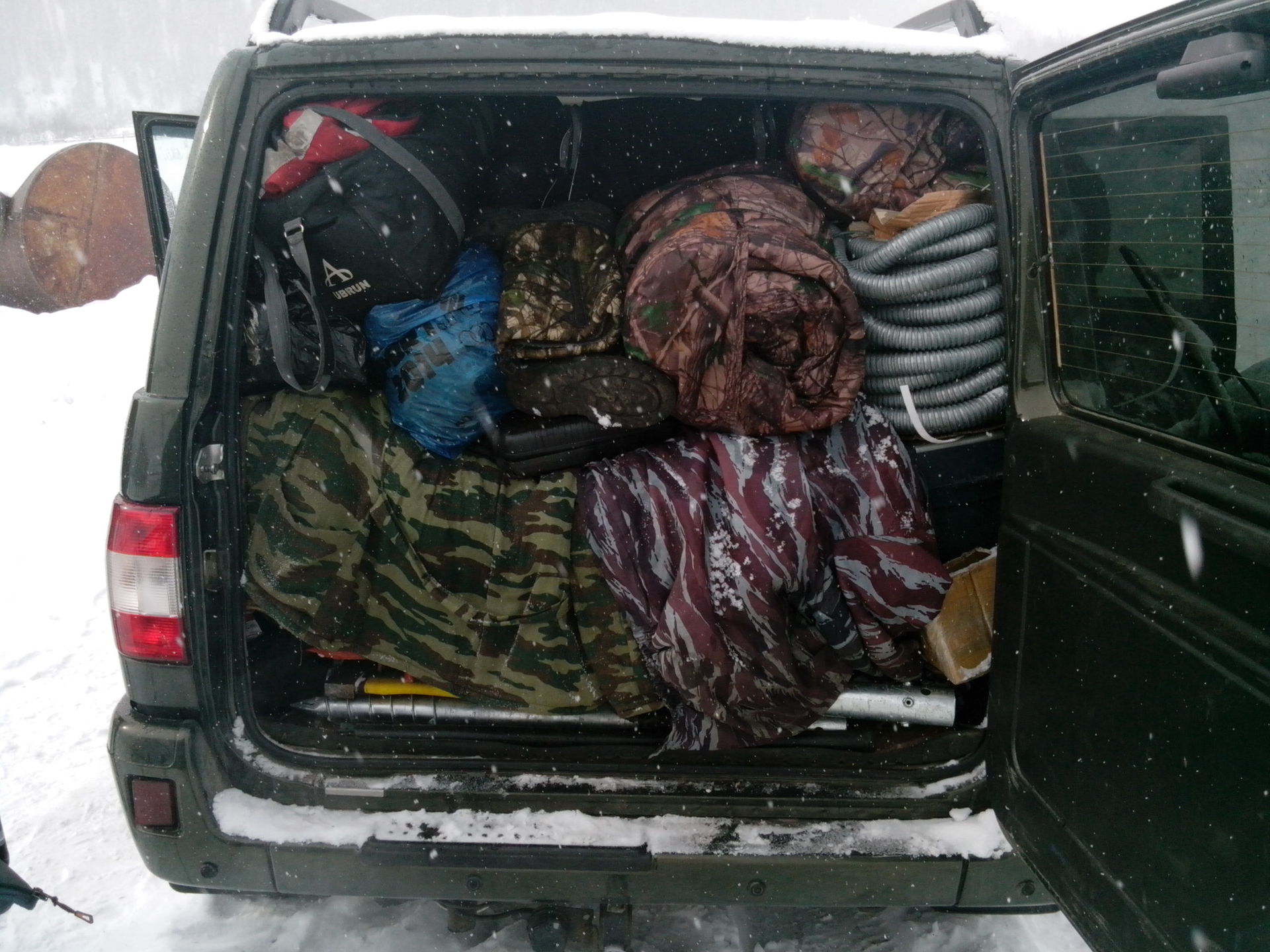
Panoramic bonus photos, filmed on a trip just before the closing of the winter road

PS There is a challenge for cool ITU habr: on the Conext ComBox device there is a web interface, on the satellite receiver there is a white IP-address, there is a simple TP-Link cable router. Task: to organize access to the web-interface of boxing, while access is organized through a team-viewer on a netbook connected to the system. Cope with the task of a separate respect and possible interesting challenges in the future, already for $ :)
UPD: Everything was done with the help of one good habrachelovek! Thank you all for your participation and attention!
It is clear that not from the life of a good people put solar power plants, but when the supplying electric grid organization rolls out a price tag around 1.5 million rubles per kilometer of power lines, plus a lot of money for the project, the choice becomes obvious. But this is not what we are talking about today. Today we will talk about the experience of the power supply of a small village that does not have access roads other than a winter road, and in summer you can swim to it along the river by boat, or on a horse, climbing into the mountains and crossing the river during the shallows.
This village is called Suranash, located in the Altai Republic, in the Turochaksky district. The population is 40-50 people, 10-12 yards. The main activity is animal husbandry, fishing, hunting and gathering. In short, the usual types of employment for the village. Power supply is provided by two diesel generators, the main and backup, with a total power of 34 kW. Since everyone has heating in the village, the main consumers are televisions, kettles, irons, washing machines, and so on.
Since we are a supplying organization, our task is to ensure uninterrupted power supply to the communities under our control.
We deliver fuel to Suranash in winter, before the winter road subsides, and there is no access to fuel tanks until next winter. To eliminate possible interruptions, as well as save money on the purchase of constantly rising fuel, it was decided to install a hybrid autonomous solar power plant, as part of an energy service contract. (Caution TRAFFIC: many photos) Next, read all about it under the cut:
')
The project was fully developed by the specialists of Energy Service Company LLC, starting from the drawings, the selection of components, and ending with installation and commissioning.
I can’t see the sense in steps, in general, the procedure looked like this: design, preparation of constructive parts, purchase of components, delivery to the site, installation work, and commissioning.
At the design stage, the main parameters of the station, location, construction, calculation of the capacity of batteries, inverters, and other equipment were determined.
Further, preparation began in the workshop walls - drilling, welding, fastener packaging, packing of components into boxes. Several photos of the process:



After preparing all the components - loading and delivery to the place of construction, through winter roads, very treacherous roads.




Station installation location:


After justification at the base, preparations for the installation began - the markings were made and the holes for the posts began to be drilled.
The soil is not the most pleasant, clayey, viscous.



Next, install concrete pillars

And they started installing fasteners for solar panels


Fasteners installed, installation of solar panels begins:




Ruslan plays the role of Angry Bird. In fact, with these ropes we adjusted the angle of the batteries in relation to the sun.

View from afar:


The production of solar panels - 10 kW * hour at the peak, on average from 5 and up, depending on the weather.
Then the work was divided into two parts: the first team took up the installation of charge controllers and autonomous inverters in the container, disconnection of cables, and other engineering work, the second team took up the fencing of the territory. The third team in the person of me and the director of the company came only to install satellite Internet and to establish the IT part of the work.



It was decided to buy the Internet in Rusat, which offers relatively affordable VSAT-Internet under the brand KiteNet.
Installation and configuration went without any problems, except that the platform itself was still working in test mode, and later, with the transition to normal mode, I had to go to Suronash again to restart the terminal and set up sending reports to the Conext ComBox.
Charge controllers and autonomous inverters are located in the container, the choice fell in favor of Schneider electric.




After setting up and launching the station, it remained to configure the auto-start of the diesel generator.
Applying engineering ingenuity, set it all up with the help of some mother and a normally closed relay from the Zhiguli and the generator automatic start block.

Generator startup module - right black box with a train

At this almost all the work was completed, and it was time to get home. Time to install the station took 10 days.
The station operates in normal mode, the diesel generator practically does not start. Since the launch of the station (March 1), the diesel generator has been operating for approximately 15 hours. Electricity is supplied around the clock, by the summer we expect an increase in load due to the purchase of refrigerators and additional equipment by the villagers.

Panoramic bonus photos, filmed on a trip just before the closing of the winter road

PS There is a challenge for cool ITU habr: on the Conext ComBox device there is a web interface, on the satellite receiver there is a white IP-address, there is a simple TP-Link cable router. Task: to organize access to the web-interface of boxing, while access is organized through a team-viewer on a netbook connected to the system. Cope with the task of a separate respect and possible interesting challenges in the future, already for $ :)
UPD: Everything was done with the help of one good habrachelovek! Thank you all for your participation and attention!
Source: https://habr.com/ru/post/229057/
All Articles